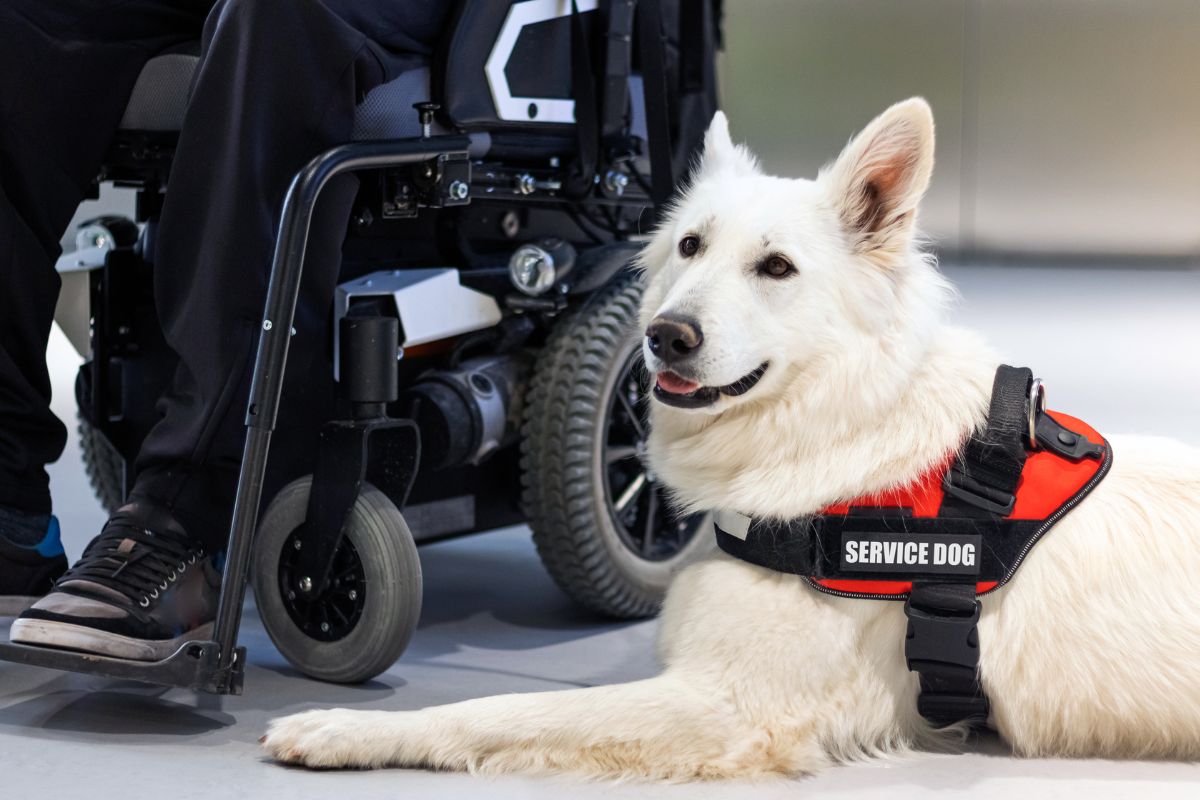It’s tempting to pet any friendly, well-behaved dog, but service dogs are always on the job! Let’s explore the most common types of service dogs and why it’s important to keep them focused on their duties. Happy National Service Dog Month!
What is a Service Animal?
The Americans With Disabilities Act defines a service animal as “an animal that is individually trained to do work or perform tasks for a person with a disability.”
Surprisingly, only dogs and miniature horses can be qualified as an official service animal, all other species are considered emotional support animals instead.
What Can a Service Dog (or Horse!) Do?
Service dogs are extremely smart and can be trained for the highly specialized needs of many medical and physical disabilities. Here are a few of the most common types of these amazing animals.
Guide Dogs
The most well known example of a service dog is a guide dog for the blind or visually impaired. These dogs help their human companions navigate obstacles, elevation changes like stairs or curbs, and alert them to dangers like traffic.
Hearing Dogs
These dogs use their keen sense of hearing to assist owners who are deaf or hearing impaired. With a nudge or a tug, they can indicate to their owner that an alarm is going off, a doorbell is ringing, or if someone is calling their name.
Mobility Assistance Dogs
These steady companions assist individuals with physical disabilities or limited mobility. They can provide balance support, retrieve dropped items, open drawers and even push buttons!
Seizure Response Dogs
A seizure response dog’s nose can detect nearly imperceptible changes in body chemistry that may precede a seizure. They can alert family members of a seizure, provide support, retrieve medications or a phone, and can even stimulate a response to bring them out of a seizure.
Diabetic Alert Dogs
Similar to a seizure response dog, a diabetic alert dog can also detect body chemistry changes leading to dangerously high or low blood sugar levels. These dogs alert their handlers to blood sugar changes and can retrieve medications for them.
Psychiatric Service Dogs
More than just an emotional support dog, these loyal companions can help with conditions like PTSD, anxiety, and depression. They can calm a panic attack, interrupt a dissociation episode, create a physical buffer in a crowd, and provide pressure therapy (think weighted blanket, except the blanket is furry!).
Autism Service Dogs
Particularly helpful for children with autism, these dogs help sensory overload with pressure therapy, prevent wandering, and can alert caregivers to a dangerous situation. New research suggests non-verbal autistic children may begin talking to their therapy dog leading to breakthroughs in communication!
Why Can’t I Pet A Service Dog?
Service dogs out in public are considered “at work” and should maintain focus solely on their handler. While we all love to pet a very good boy, it can be dangerous for their handler if their service dog is distracted and misses a cue that is critical for the well-being of the owner. Rest assured, even though they are considered a working dog they get plenty of downtime and lots of love!
How Can I Get a Service Dog?
You can work with a local organization that specializes in your unique needs to see if you may be a good candidate for a service dog. They can then help you connect with trainers that could provide your new companion. Be prepared to wait up to 5 years and spend around $25,000 up-front for their highly skilled services!
Alternatively, many service dogs are trained by their owners specifically for the tasks they need. Local training facilities, like College For Pets here in New Hampshire, can help assist with teaching these dogs new helpful skills!
Service dogs (and horses!) provide invaluable assistance, enabling people with disabilities to live more safely and independently. They are quite amazing animals and deserve their whole month of celebration!
